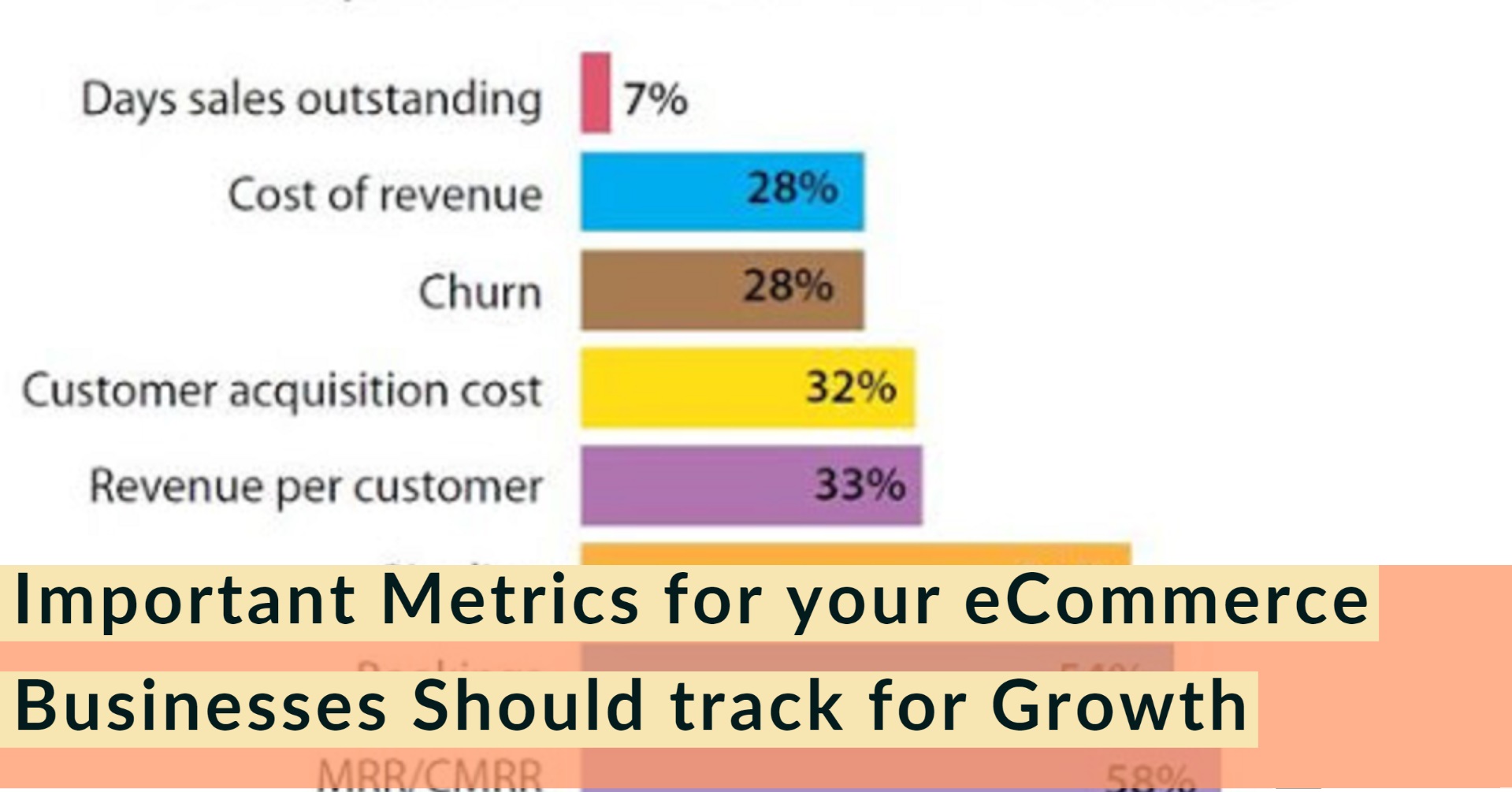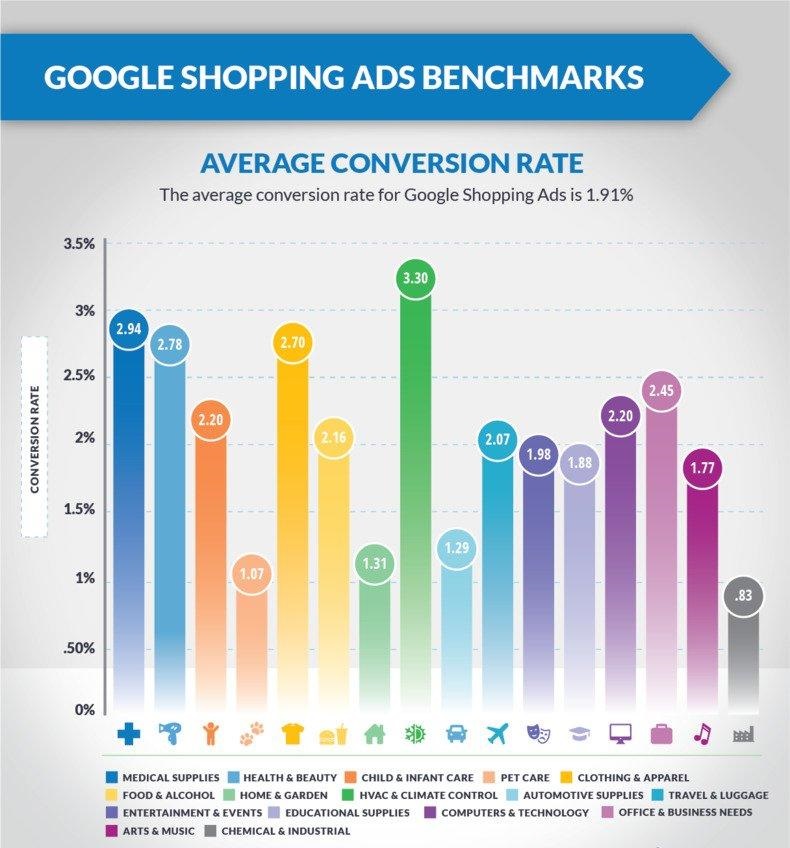Important Metrics for your eCommerce Businesses Should track for Growth

 5mins Read
5mins Read
The most successful eCommerce businesses make decisions based on metrics. They know the state of their store’s performance at all times (Data) and know which levers to push to grow.
Every marketing and promotional decision is driving by the data. Because without data you have virtually no chance at making improvements. You do not know what is working, what is failing, or even what success looks like.
Driving growth in your e-commerce business requires a few key components:
- Setting measurable goals (key performance indicators)
- Identifying the metrics necessary to track those KPIs
- Monitoring performance and making adjustments as necessary
This, however, does not mean that you should be tracking and optimizing every metric at your disposal. The key is to know the metrics that make the biggest impact on your eCommerce venture. To point you in the right direction, here is a list of seven important eCommerce metrics you should be tracking and optimizing on your store.
- Sales Conversion Rate
Your eCommerce sales conversion rate is, simply put, the percentage of people who visit your online store or page who make a purchase. Your conversion rate is a pretty cut and dry metric.
To calculate your conversion rate, use the following formula:

For example, 14 customers made a purchase among 150 visitors, so the conversion rate (14 divided by 150) is 9.3%.
Your conversion rate is a good overall indicator of success, but do not stop there. If you break it down and segment your conversion rate you can get a lot more granular with the data, giving you tremendous insight into individual campaigns you are using to grow your business.

How to improve your conversion rate?
- Speed up your; product pages.
- Upload high-quality images of your products
- Optimize product listings using keywords
- Email opt-ins
According to Campaign Monitor, email marketing delivered an ROI of 4400% in 2016 and their 2018 annual report revealed 59% of marketers believe email delivers the highest ROI of all marketing channels.
Ideally, you want to get as many people on your email list as possible, even if they do not buy your products. So it is important to track your total opt-ins and your opt-ins by source. That is, you want to know the individual opt-in rates of every form on your website.
Unlike ordinary website/page visitors, people who sign up to your newsletter care enough about your brand to get updates on your products and services. This means they are also more likely to become paying customers soon.
One way to get people to subscribe to your emails is to offer something of value (e.g., a voucher or code to first-time subscribers) in exchange for your audience’s email addresses and contact information.
- Customer lifetime value

Your customer lifetime value is a metric of the total you earn from a typical customer throughout their life. If you earn $25 over four transactions from a typical customer throughout their life, your CLV is $100. Knowing your customer lifetime value tells you how much you can spend to acquire a customer and how far you should go to retain them.
There are three ways to calculate customer lifetime value. They might be a bit confusing, so try this calculator first. There are many ways to increase your customer lifetime value, but they boil down to increasing your average order value (more on this in a minute) and building long-term relationships with your customers so they become repeat buyers.
- Customer acquisition cost
Naturally, it costs something to acquire a new customer. This value is called your customer acquisition cost.
To make money, your customer acquisition cost needs to be less than your customer lifetime value. Ideally, your acquisition cost should be less than your average order value so you make money off every new customer.
Some businesses can afford to lose money on the first sale and make it up off that customer later, but eCommerce businesses do not usually have margins to support that.
You can calculate your CAC by dividing your total marketing spend by your number of customers. That is an overall figure, however. It is also useful to calculate your CAC by source. You want to know your CAC for each traffic channel.
To lower your customer acquisition cost.
- Improve your site for conversions.
- Optimize your paid ads so you spend less for the same results.
- Invest in nearly-free marketing channels that you control, like email marketing, social media, online communities, or content marketing.
- Create a referral program so your customers refer you to new customers.
- Revenue by traffic source
Some traffic sources send visitors who are more likely to become customers. It is important to stop spending cash on sources that do not work well or do not work at all, and invest that money in sources that do work.
How do you identify which ones work? By calculating your revenue by traffic source – a metric that shows you which channels send you actual customers, as opposed to visitors who never buy. How you raise your traffic by source depends on the source.
- Average order value
Your average order value is, quite simply, the average value of each purchase. To discover yours, divide the total value of all sales by the numbers of carts.

Naturally, you want customers to spend as much as possible so you earn as much as possible. You need to know your average order value so you can find ways to raise it.
Tips?
- Upsell your customers' complementary items that improve the usability of their primary purchase.
- Offer products as a package so customers get a small discount on each item as opposed to buying them separately.
- Offer free shipping on purchases above a certain threshold to entice customers to maximize their spending.
- Shopping cart abandonment rate
This metric is the percentage of shoppers who add items to their shopping cart, but then leave your store without making a purchase. Nearly 70 percent of shoppers abandon their carts, but some of that revenue is recoverable, so it is important to lower your abandonment rate as much as possible.
Tips?
- Promote your offerings on social media.
- Simplify the shopping experience, particularly the checkout process, so customers can shop smoothly.
- Use remarketing to bring undecided shoppers back to your store. This can include targeted ads and follow-up emails.
CONCLUSION
Any store, small or large, should be paying attention to these metrics. As we noted initially, statistical significance plays a part in whether you can accurately measure changes in these metrics.
Putting this information together regularly (at least monthly) is the secret to running a data-driven e-commerce business. One in which campaigns are launched, managed and refined with a purpose.
Stay in tune with that data and at any time, at a glance, you will be able to pinpoint areas that require immediate attention and a change in strategy to see your business grow.
Start your Free VPCART TRIAL NOW



















 TrustGuard - PCI Security Scanner
TrustGuard - PCI Security Scanner
